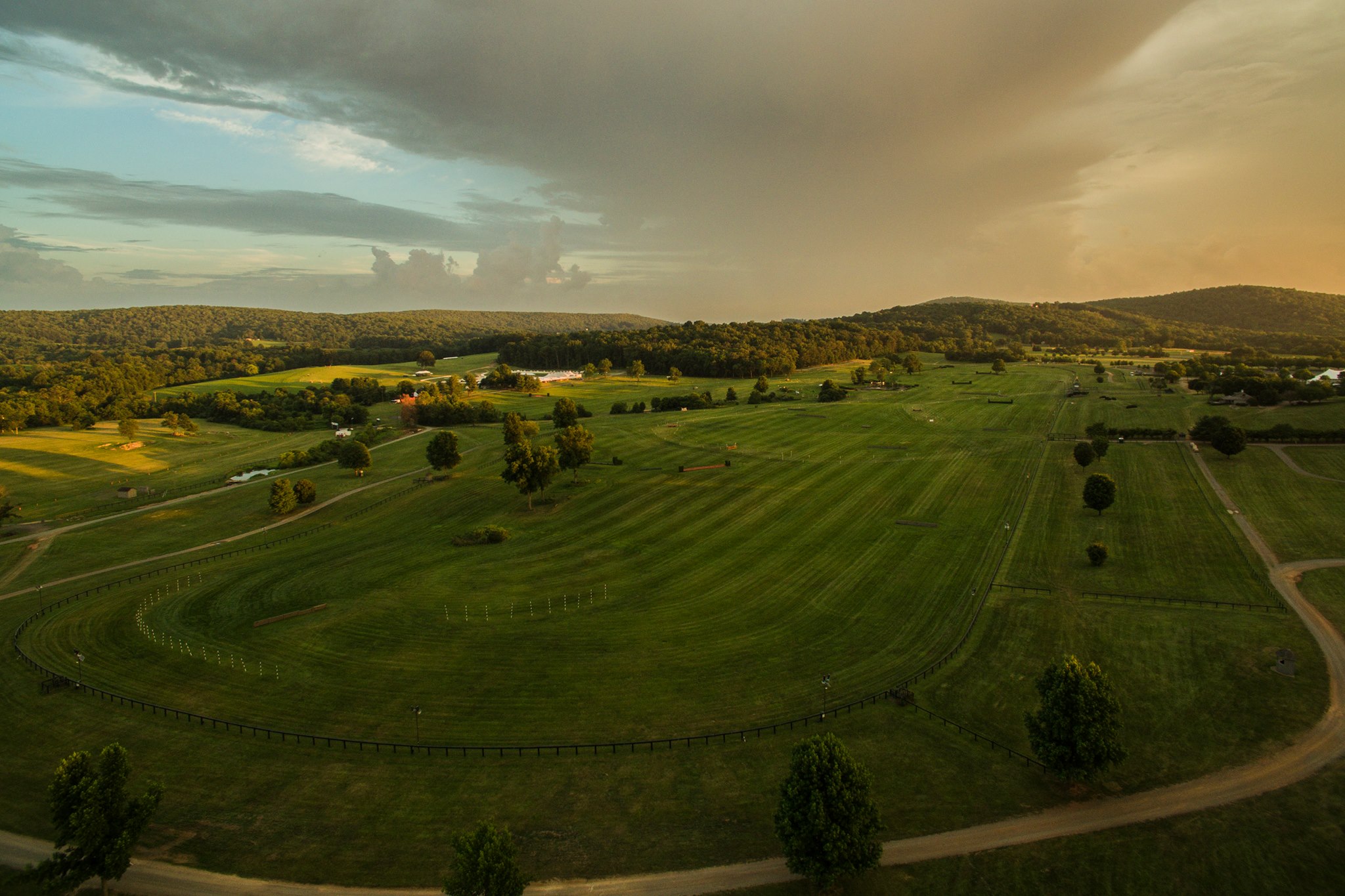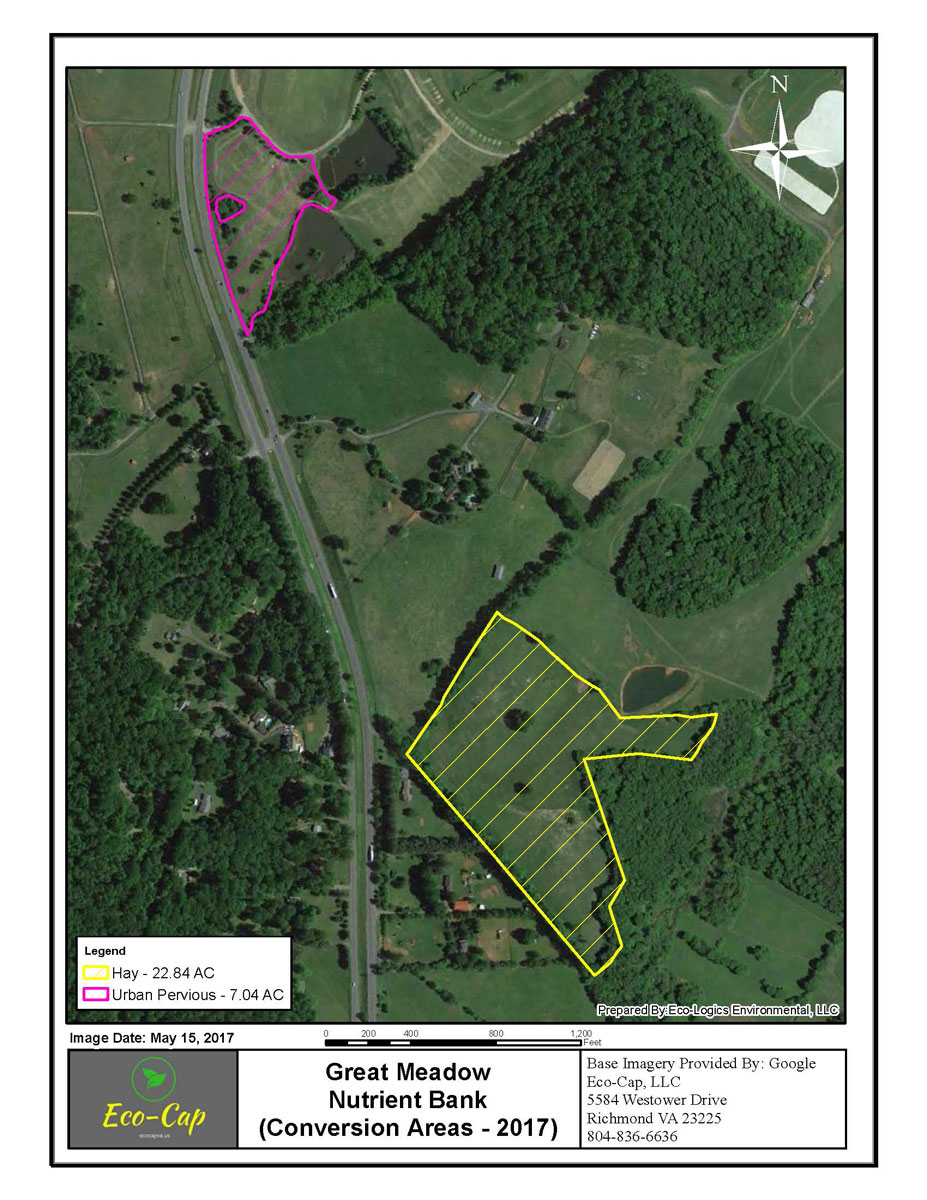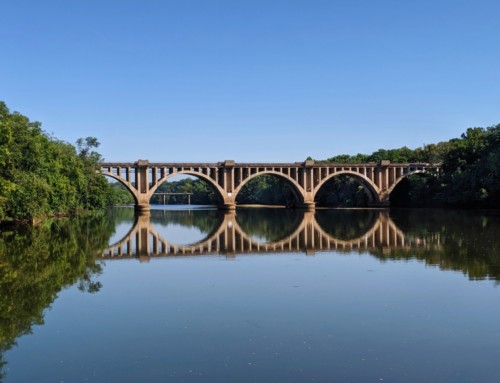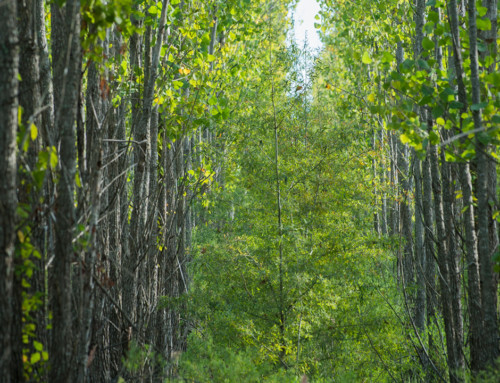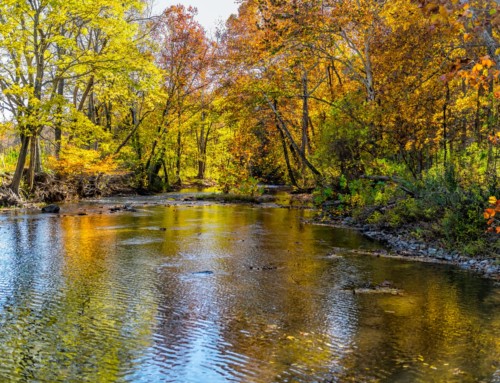“Great Meadow’s new trees are supporting our mission to protect our land and the environment.” – John Hochheimer, Chair
Location: Fauquier County
Project Size: 29.88 acres
Credits: 20.06 P, 156.76 N
Great Meadow is a 375-acre equestrian event park hosting more than 40 events annually. Located in the Potomac watershed in northern Fauquier County (HUC 02007008,) the project drains into the Broad Run tributary converting previous corn crop to forest. This bank no longer has credits available.
After 35 years of meticulous grooming, how do you improve a 200-acre equestrian event park in northern Virginia? Great Meadow, home of the prestigious Virginia Gold Cup steeplechases races (and 40 other large, community-based events) thought it had most of the questions answered. That is, until the 175-acre farm next door went on the market to sell. Hard to miss, the property was in their direct field of view and naturally connected by water, open fields, and forest.
As a 501(c)3 non-profit foundation with a mission to “preserve open space for equestrian and community service,” the leadership knew they had to acquire this valuable land. If purchased, the new property could host a new world-class arena, international equestrian competition, and space for many more events, large and small. The goal was approved, a strategy planned, fundraising began, and the plans started falling into place.
A cornerstone of the fundraising strategy would place the entire property under a conservation easement protecting the land in perpetuity. Great Meadow has no tax (as a non-profit) and would, unfortunately, miss the federal tax deductions available. The leadership knew, however, the Virginia state tax credits they would earn were transferable, and could be sold, often for nearly full value. But how?
After learning Conservation Plus offers the service as a part of their portfolio plan, the organizations met and agreed. Once assigned, Conservation Plus completed the job in a matter of days. Finally, Great Meadow was closing in on its goal. Still, more money was needed. Conservation Plus stepped up to propose a nutrient bank on 25 acres of the new property. A new forest would replace the corn once planted, mitigate the nutrient pollution and sediment runoff, and produce a significant financial reward for Great Meadow. The plan was approved, the trees were planted, and the credits have nearly sold out.
It was only a piece of the puzzle, but integral combining the land and its natural assets in an ecologically sound way. Today, the plan at Great Meadow has become reality.
